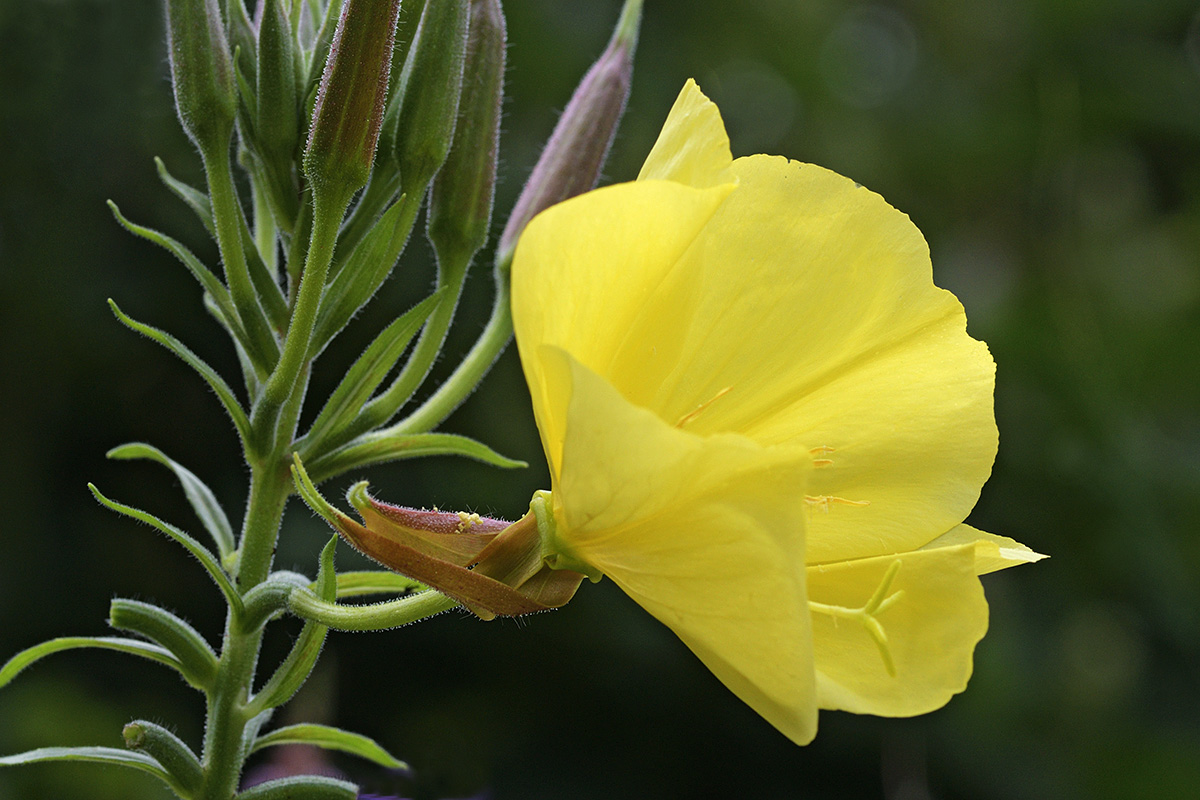The evening primrose is native to eastern and central North America. It has widely naturalized elsewhere in temperate and subtropical regions.
The plant takes two years to complete its life cycle. The first year it grows a small rosette at ground level. The second year, it shoots up a flower stalk, commonly with multiple stems. Its narrow, lance-shaped leaves have red veins.
Blooming lasts from late spring to late summer. Blossoms start opening at the lower end of the stalk first, working their way towards the top.
Flowers usually open in the evening and only persist until the following noon. The visibly rapid opening of the flowers is an interesting spectacle, hence the name ‘evening primrose’.
Plant species that bloom at night have often co-evolved with an animal (e.g. with moths) for pollination services that are active at night. The flowers are usually fragrant, which is another characteristic of night blooming plants. Many moth species can detect fragrances from long distances and will follow the fragrance to find their nectar reward. Sphinx moths are among evening primrose’s pollinators.
The fruit capsule contains numerous seeds, released when the capsule splits open at maturity. The seeds are important food for birds.
